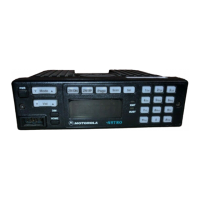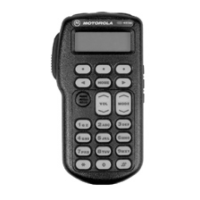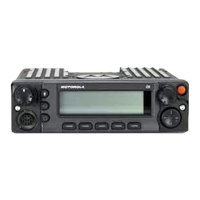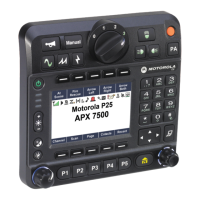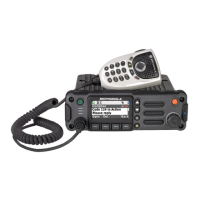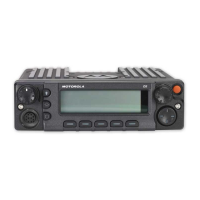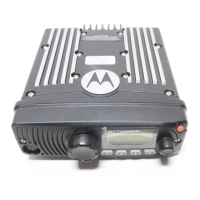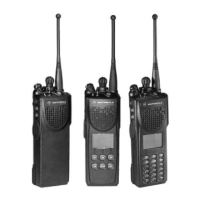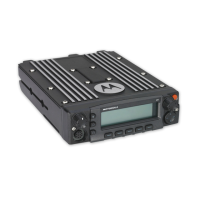6881076C25-E September 5, 2008
Theory of Operation: Voltage Control Oscillator 3-49
3.5.2 UHF Band
3.5.2.1 General
The VCO is located on an alumina substrate with a metallic cover. The buffer-doubler-buffer section
is located on the PC board and may be repaired using normal repair methods.
3.5.2.2 Super Filter 8.6 V
Super-filtered 8.6 V enters the carrier board at J601-12, through an R-C filter, then on to the drain of
Q9610 and the collector of Q9635.
3.5.2.3 VCO
The oscillator consists of Q9610, the main transmission line (T-line), varactor bank (CR9616-9617,
C9616-9617, L9616) and feedback capacitors (C9611-9613). Components CR9610, C9614, and
R9613 form an AGC circuit to prevent breakdown of the FET. Components CR9626 and C9626 form
a bandshift circuit to shift the oscillator frequency up 50 MHz; C9630-9631 and CR9630 form the
Receive shift circuit which shifts the VCO up 50 MHz. The main modulation circuit consists of C9621
and CR9621 in conjunction with the deviation compensating capacitors (C9622 and C9623). Finally,
transistor (Q9635), resistors (R9635-9639), and capacitors (C9635-9636, C9638) form the output
buffer.
This VCO utilizes both a positive and negative steering line. The SL- should be -4.O V (±.3 V) at all
times. The SL+ will range from 1 to 8 V, depending on frequency and AUX bits.
3.5.2.4 Receive Mode (AUX2* Low)
When AUX2* input is low, the receive pin diode, CR9630, is forward biased by 8.6-V supply thru
Q5650 and R5652. This current is then sunk into the RF board thru R5654. At this time the voltage
divider output of R5649, R5651, and R5653 will keep Q5651 turned off.
3.5.2.5 Transmit Mode (AUX2* High)
When AUX2* is high (8.4 V), Q5650 will be off and Q5651 will be on. This puts -8 V on the anode of
CR9630 and +8.4 V on its cathode. With approximately 16-V reverse bias on the diode, the receive
bandshift T-line is removed from the circuit.
3.5.2.6 Bandshift Circuit
R9625, C9625, L9628, and C9628 form a bandshift circuit which shifts the frequency of the oscillator
slightly. There is one bandshift in receive and one in transmit. The circuitry works similar to the
receive pin circuitry but with the cathode of CR9626 returned to ground. This results in a maximum of
8-V reverse bias on this diode.
3.5.2.7 Output Buffer
Transistor (Q9635), resistors (R9635-9639), and capacitors (C9635-9636, C9638) form a simple
common-emitter buffer to provide isolation to the VCO and an output power of +10 dBm.
3.5.2.8 First Buffer
The VCO output is coupled to the first buffer via blocking capacitor (C5661), resistive pads (R5661
and R5662), and a high-pass filter (L5660 and C5662). Q5660 is a self-biased, common-emitter
amplifier which provides approximately + 10 dBm drive to the doubler as well as reverse isolation to
the VC0.
